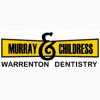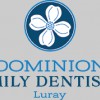Ken Pankow is a certified equine dentist who is registered in Virginia. He resides in Flint Hill, Virginia and serves a loyal clientele of horse owners from Charlottesville, Virginia to Annapolis and Frederick, Maryland, and all points in between. He has traveled as far as Europe and the Western United states to provide high quality equine dental services.
Ken provides a dental maintenance program that will keep your horses (young or old) on a corrective and balanced path. Keeping a horse on a maintenance program will improve overall health and longevity. He uses only hand floats. More than ninety percent of the horses Ken works on do not need to be sedated. With patience and a quiet approach most horses will relax for a routine floating.
Ken provides a dental maintenance program that will keep your horses (young or old) on a corrective and balanced path. Keeping a horse on a maintenance program will improve overall health and longevity. He uses only hand floats. More than ninety percent of the horses Ken works on do not need to be sedated. With patience and a quiet approach most horses will relax for a routine floating.
Services
About Ken Pankow LLC
Report
I am a Virginia Registered Equine Dental Technician specializing in Traditional Hand Floating.
I provide equine dentistry services throughout the Northern and Piedmont Virginia region and Maryland.
My work also takes me to many locations including Colorado, Florida and overseas to Germany.
I graduated from the University of Maine with an animal science degree in 1977.
I apprenticed as an equine dentist while still living in Maine.
Upon completing my training I moved to the mid-Atlantic area and began practicing equine dentistry at the Charles Town racetrack in West Virginia.
I provide equine dentistry services throughout the Northern and Piedmont Virginia region and Maryland.
My work also takes me to many locations including Colorado, Florida and overseas to Germany.
I graduated from the University of Maine with an animal science degree in 1977.
I apprenticed as an equine dentist while still living in Maine.
Upon completing my training I moved to the mid-Atlantic area and began practicing equine dentistry at the Charles Town racetrack in West Virginia.
Horse Teeth Facts
Report
The horse is a unique animal when it comes to teeth.
Like humans, horses need routine dental care to stay healthy.
Unlike humans, horses will constantly erupt new teeth throughout their lifetime.
Left untended, horse teeth can cause great pain and make your horse unruly and difficult to ride.
In horses, the maxillary is wider than the mandible and the upper premolars and molars can develop an edge which can irritate and lacerate the cheeks.
The mandible premolars and molars can also develop an edge, which can lacerate the tongue.
Like humans, horses need routine dental care to stay healthy.
Unlike humans, horses will constantly erupt new teeth throughout their lifetime.
Left untended, horse teeth can cause great pain and make your horse unruly and difficult to ride.
In horses, the maxillary is wider than the mandible and the upper premolars and molars can develop an edge which can irritate and lacerate the cheeks.
The mandible premolars and molars can also develop an edge, which can lacerate the tongue.
Tooth Floating
Report
To float a horse's teeth means to smooth or contour your horse's teeth with a file (called a "float").
Unlike adult human teeth, horse teeth grow throughout their lifetime.
Your horse's teeth will develop sharp edges that may be painful and make it difficult to chew food or hold a bit.
Most horses have all 36-44 permanent teeth by the age of five.
Their front teeth cut hay and grass, while the top and bottom cheek teeth grind their food between the flat surfaces in a sideways motion.
This grinding action breaks down the food into a pulp before swallowing, making it easier to digest.
Unlike adult human teeth, horse teeth grow throughout their lifetime.
Your horse's teeth will develop sharp edges that may be painful and make it difficult to chew food or hold a bit.
Most horses have all 36-44 permanent teeth by the age of five.
Their front teeth cut hay and grass, while the top and bottom cheek teeth grind their food between the flat surfaces in a sideways motion.
This grinding action breaks down the food into a pulp before swallowing, making it easier to digest.
FAQs
Report
Is there a minimum number of horses required for you to come to my barn?
If your barn is in my regular work zone there is no minimum.
If the barn is outside my normal work zone this will be determined on a case-to-case basis.
How often should I have my horses' teeth floated?
Most horses benefit from an annual visit.
If you have a young horses under the age of 5-6, very active show horses, or horses with dental malocclusions then twice a year floating would be the norm.
If your barn is in my regular work zone there is no minimum.
If the barn is outside my normal work zone this will be determined on a case-to-case basis.
How often should I have my horses' teeth floated?
Most horses benefit from an annual visit.
If you have a young horses under the age of 5-6, very active show horses, or horses with dental malocclusions then twice a year floating would be the norm.
Testimonials
Report
Ken has been my horse dentist for over 30 years.
He has always been very professional, shows up on time and his dentistry improves the performance of our horses.
I would highly recommend Ken as an equine dentist for your horses.
Twenty-five years and counting: Ken has done a superb job of caring for my horses' dental needs over that period.
Always punctual, tactful in handling the horses, efficient and thorough.
Horses behave well for him and we have never had a problem.
He has always been very professional, shows up on time and his dentistry improves the performance of our horses.
I would highly recommend Ken as an equine dentist for your horses.
Twenty-five years and counting: Ken has done a superb job of caring for my horses' dental needs over that period.
Always punctual, tactful in handling the horses, efficient and thorough.
Horses behave well for him and we have never had a problem.
Reviews

Be the first to review Ken Pankow.
Write a Review
